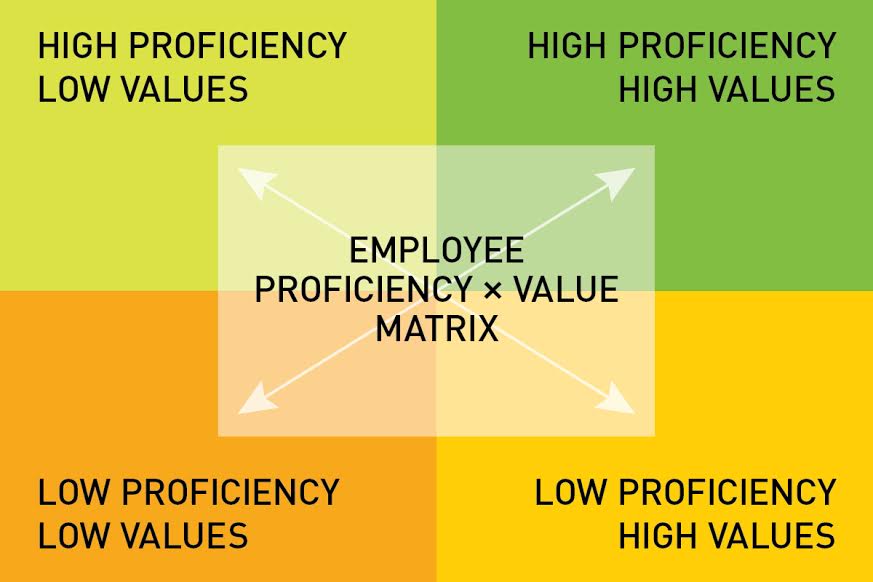Article
7 Frequently Asked Branding Questions

With over twenty years of experience as branding consultants, BrandExtract co-founders Jonathan Fisher and Bo Bothe have received their fair share of brand questions from clients and curious entrepreneurs.
To help clarify the branding process for business owners looking to understand and explore the full impact of their company's brand, our Co-Founders answered seven of our most frequently asked branding questions. From building brand awareness to transferring brand equity during a divestiture, this “FAQ” offers insight into how your brand can affect everything from your business goals to your corporate culture. Here's what Bo and Jonathan cover:
- How do I fix, enrich or improve my company culture?
- How can I get the most out of my company's mission, vision, and values?
- How do I launch a new product or service line so that it fits with my existing brand?
- What are the fundamental components I need for a successful brand?
- How do I successfully spin off a company without losing market share or profit?
- How do I increase brand recognition?
- Why do I need a full research or discovery phase before kick-starting a rebrand?
Question #1: How do I improve my company culture?
Company culture starts with your mission, vision and brand values. Make sure these are aligned, institutionalized and practiced. Engage your employees in that process through surveys, special task force teams or other feedback opportunities.
Build reinforcements into the culture itself. Look for ways to ritualize your brand and your culture through corporate events or employee recognition systems. Use “RRR” to test whether company culture holds a significant role in your workplace: Can you recognize it? Can you repeat it? Do you reward it?
To protect your company culture, establish educational procedures and training programs for new hires that help them understand how to adopt and embrace your culture. Cultural interviews can also help filter people for a cultural fit before they are hired.
Company culture must be supported and endorsed from the top down in order to gain traction. To be authentic, everyone needs to buy-in, including management.
Further Reading:
10 Reasons to Design a Better Corporate Culture, Harvard Business School Working Knowledge
Question #2: How can I get the most out of my company’s mission, vision and brand values?
Companies often make the mistake of talking about the “things” they value, versus framing values as actionable behaviors. Effective brand messaging communicates the unique benefits and value propositions of the company's mission, vision and values. Your vision should describe where you’re going, the mission explains why, and values depict how you are going to behave along the way. To provide a simple example:
Mission
I want to see a beautiful sunset from the highest mountain peak.
Vision
I will climb to the top of this mountain.
Values
I will climb safely and slowly, and I will stop to help other climbers on the way.
Values help employees make instantaneous decisions about how to behave. They are critical to managing culture. Survey your employees to see if they know your company mission, vision and values. If they can't remember, then it's probably not a meaningful part of their day-to-day experience at your company.
Mission, Vision, and Values As Management Tools
Used effectively, however, your mission, vision and brand's values can be strategic management tools. They support your brand by connecting your brand promise to organizational behaviors, which in turn support service delivery. They can also act as a powerful litmus test that you can use to make important decisions, including the hiring or firing of personnel.

Imagine your employees on a matrix, where one axis represents their job proficiency and the other axis represents how their behavior aligns with your company values.
Your ideal employee would be on that upper right corner of the matrix: a high performer who buys into the company culture and conducts themselves in a way that aligns with your values. On a sports team, these employees would be your starting players.
Other employees may exhibit positive behaviors that mirror your brand values, but do not perform to the same degree. These employees need training, but they are coachable – they are your “second string.”
In the upper left quadrant, you have employees who perform well but don’t endorse your values. These are your “free agents” – although exceptionally talented, they may eventually cause trouble.
Employees in the lowest quadrant do not perform well or conduct themselves according to the standards established by your mission, vision and values. These people should be traded out; there’s a better place for them outside of your organization.
Question #3: How do I launch a new product or service line so that it fits with my existing brand identity?
Think carefully about how the product fits the brand architecture and choose a position that allows customers to easily understand how the new offering fits within the overall brand family. Understanding brand perception is crucial for positioning the new product within the overall brand family. Unless you have reasons for strategically separating it out from your other products, launch it in a way that stays consistent with your brand standards.
You will need a strategic marketing plan to introduce it, prepare the market and pilot and test deployments. Some industries benefit from using brand advocates to test and champion your product for proof of performance. You may try to build adoption before fully branding the product.
After the initial launch, consult your feedback loops to measure how your plan is working and adjust the messaging as needed. Be prepared to maneuver these changes and build flexibility into your follow-up process.
Make sure you invest adequate resources, including people and time, to support your efforts. If your launch succeeds, you may need the latitude to expand your efforts in order to fully capitalize on the new product’s momentum. Rather than waiting for the annual budget to come back online, consider setting up a staircase budget model that allows more funds to become available as you hit certain success markers.
Further Reading:
Why Most Product Launches Fail, Harvard Business Review
Question #4: What are the fundamental components I need for a successful brand?
Planning and Preparation
Planning is crucial—it allows you to capitalize when an opportunity presents itself. If you are not ready for an opportunity, your brand will generally won’t reach its maximum potential.
Assessment and Monitoring
To prepare for and find new opportunities, assess and monitor your brand's identity by evaluating your company’s strengths and areas for improvement with quarterly or annual surveys with your employees and customers. These recurring surveys will help you measure if impressions are changing over time. You can also conduct an audit of social and news media mentions to keep track of how and where your company is being talked about. For even more insight into what matters to your customers, consider monitoring for mentions of your competitors, too.
Methods for Addressing Feedback
Be open and receptive to customer feedback and concerns. Manage negative interactions if they occur. You can't hide from your issues, so don't ignore them. Complaints give you a chance to fix your brand – otherwise, it suffers in silence. Acknowledge issues, and fix what you can.
Consistency and Commitment
Consistency in tone, messaging, design and delivery are important as well. Good brands do what they say and deliver on their promises. The level of consistency you offer to your customers can help build trust and strengthen relationships.
Further Reading:
The Top 7 Characteristics of Successful Brands, Forbes
Question #5: How do I successfully spin off a company without losing market share or profit?
The brand equity of the parent company does not automatically transfer to the new entity. The process of divesting a branch or service line and building a new company requires the same energy and activity as any other brand launch.
Brand Research
On a fundamental level, you must carry out the appropriate research to confirm the validity of your reasons for separation. Never assume that you know what the marketplace wants or needs without proper testing and evaluation.
Differentiation
Because only one company can retain the existing brand, you will also need to commit resources to developing and differentiating the newly spun-off company. Use your market research to align the new brand with the intent of the spin off. For example, if the intent of your spin-off is to sell products at two different price points, you don’t want to position the two brands as being too similar.
To minimize business disruptions, develop a strong communications plan that explains the reason for the spin off and clearly demonstrates the value of the separation to the marketplace. Create an internal communications strategy that generates understanding, buy-in and excitement from employees about the future of the company. Failure to address your internal audience can generate fear or pessimism that may potentially leak outside the organization, affecting public perception.
Further Reading:
The Art of the Spin-off, The Economist
Question #6: How do I increase brand recognition?
Brand recognition means more than receiving name mentions in front of potential customers; it's about cultivating the desired perception and understanding of your brand among key audiences.
Brand Benchmarking
A benchmark assessment will help you measure and understand where your brand recognition is weak and why. To truly increase brand recognition, you should be prepared to make operational changes as well as marketing changes. This could include updating visual elements of your brand identity.
Updated Marketing
You can gain traction through increased marketing or updated messaging; try adding new tools, adopting new strategies and experimenting with new channels. Create opportunities that will help your audience help you spread the word, providing a geometric return on your investment.
Internal Brand Advocates
You have an inherently built-in base of potential advocates in your employees. Fundamentals like this are often overlooked, but employees can be a great resource if you make it easy for them to spread the word. As you leverage your company’s mission, vision and values to talk about important business decisions or cultural choices in your office, employees can refer to this familiar messaging as a way to talk about your company with others. They don’t need to sell anything, just be visible and excited about your company.
To generate positive brand awareness, you need to give before you take. Companies often forget about the opportunity to build brand awareness by doing helpful work for the community and aligning the brand with good causes. Putting structure behind these philanthropic endeavors helps build culture, stronger employee bonds and brand awareness through association.
Further Reading:
10 Ways to Better Brand Recognition, Forbes
Question #7: Why do I need a full research or discovery phase before kick-starting a rebrand?
The assessment process gives you an honest evaluation of your strengths and weaknesses so you can hone in on your true value. The worst thing you can do for your brand is to market a promise that you can’t deliver. Without a discovery phase, how else can you make sure your positioning is going to be on target?
It’s important to benchmark the current state of your brand in order to track its shift and the return on your investment. Research gives you the ability to monitor quantitative and qualitative results and provides a foundation for your decisions. It removes personal bias and places the focus on real data about your company’s position in the marketplace. The credibility of two hundred responses from employees, clients and customers can help overcome dissenting opinions among the management team. It becomes a catalyst for organizational change.
The discovery phase also accelerates the change management process by building stakeholder engagement and alignment. As you solicit feedback and conduct outreach to key internal stakeholders, clients, and vendors, they begin to take ownership of their stake in your company’s evolution and become champions for your brand.
Market conditions are always changing: competition enters, technology turns over and new regulations arrive. The strongest companies are always managing their brand in real time. Brand monitoring and management should be a constant endeavor, but it’s especially crucial when considering a brand change.
Further Reading:
5 Ways to Monitor Your Brand’s Effectiveness, Mashable
A Few Extra Insights
Hopefully, we've helped answer some questions you've had about branding. If you have any more, we're always happy to chat. As you think about how to improve your brand, here are a few extra insights to help:
- Consider these brand consistency strategies to help boost your business value.
- Find out the keys to managing a major brand.
- Learn more about the impact of data science in branding.


